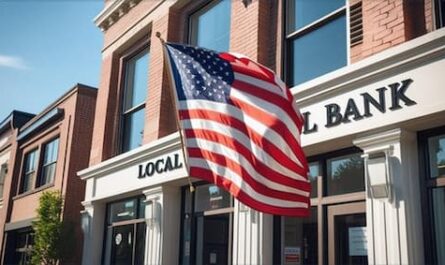Choosing how to finance your education is a big decision, and Sallie Mae offers a variety of options that can fit your unique situation. Sometimes, the path to higher education feels like standing at a crossroads with more questions than answers. You might be wondering how you’ll cover tuition, books, or even living expenses. Whether you’re just starting college, pursuing a graduate degree, or seeking a professional certificate, you can find a loan product that matches your needs. The application process is known for being user-friendly, and the flexibility in enrollment and repayment is a major benefit for many students.
What requirements are needed to qualify for Sallie Mae student loans?
When you’re considering Sallie Mae, it’s important to know that their student loans are private, not federal. This means the requirements are a bit different from what you might expect with government backed loans. For starters, you must be enrolled in a degree, granting institution full-time, half-time, or even less than half-time. This flexibility is one of the features that sets sallie mae apart, as many lenders require at least half-time enrollment. You can also use these loans for online classes, study abroad programs, or professional certifications, thereby opening up more options for your educational journey.
You should be at least 18 years old or the age of majority in your state. U.S. citizenship or permanent residency is required, and you’ll need to provide personal details like your Social Security number, address, school information, and expected graduation date. Sallie Mae will check your credit history, so if you’re just starting out and don’t have much credit, you’ll likely need a cosigner. This is common for undergraduate students, but you can apply solo if you think your credit is strong enough.
Any creditworthy adult, such as a parent, spouse, relative, or even an acquaintance, may cosign. Because you and your cosigner share equal responsibility for loan repayment, you may have a better chance of getting approved and possibly even a reduced interest rate. On the other hand, if you have a solid credit profile, you can apply without a cosigner and see if you qualify on your own.
How do I apply for a student loan from Sallie Mae
Applying for a sallie mae student loan is a step-by-step process, but it’s designed to be straightforward. You start by gathering the necessary information and include: your social security number, school details, enrollment status, degree type, loan amount, employment and income information, housing costs, and two personal contacts. If you plan to use a cosigner, you’ll need their information as well.
The application can be completed online, and you’ll indicate whether you’re applying individually or with a cosigner. If you’re unsure, you can submit your application solo first, Sallie Mae will let you know if adding a cosigner could help your chances. The lender will also ask about your cost of attendance, which is usually filled in automatically based on your school’s data. If you’ve received other financial aid, like scholarships or grants, you’ll note that as well, thereby ensuring you only borrow what you truly need.
After submitting your application, Sallie Mae will run a credit check. If approved, you’ll receive information about your interest rate and repayment options. It’s important to review these terms carefully. The maximum amount you can borrow is 100% of the verified cost of attendance at your institution, less any additional financial aid you may have received.
What types of Sallie Mae student loans are available
Sallie Mae offers a range of loan products to fit different educational paths. The smart option student loan is the most popular choice for undergraduates, but there are also loans for career training, graduate degrees, law school, medical school, dental school, and MBAs. For those pursuing certificates or technical training, sallie mae’s career training smart option loan is known for its flexibility, allowing you to borrow even if you’re not enrolled at least half-time.
Interest rates can be permanent or changeable, based on your preference. For undergraduates, fixed rates typically range from 3.49% to 15.49%, while flexible costs can go from 4.54% to 14.71%. Graduate and professional loans have similar ranges, but you should always check current rates, as they can change. You can also qualify for a 0.25% interest rate reduction by enrolling in autopay, thereby saving money over the life of your loan.
What repayment options does Sallie Mae offer
Repayment flexibility is another area where Sallie Mae stands out. While you’re in school, you can choose from three repayment options:
1. Interest-Only Repayment: You pay only the interest while in school, thereby preventing your balance from growing.
2. Deferred Repayment: Make no payments until after graduation, which can be helpful if you want to focus on your studies.
3. Fixed Repayment: Pay a small, fixed amount each month while in school, which reduces your balance over time.
After graduation, you have a grace of six months before full payments is required. Additionally, sallie mae provides a progressive repayment schedule, allowing you to continue paying interest for up to 12 months following the conclusion of your grace period. This can be a smart move if you’re still finding your financial footing after college. Meanwhile, if you’re facing financial hardship, Sallie Mae may offer forbearance, allowing you to temporarily pause payments. It’s important to reach out to their customer service to discuss your options if you’re struggling.
How does Sallie Mae compare to other lenders
Sallie Mae is one of the most recognized names in private student lending, but it’s not the only option. What makes it stand out is the broad eligibility criteria enrollment flexibility, no application or origination fees, and the ability to borrow for a wide variety of programs. Unlike some lenders, sallie mae doesn’t disclose a minimum credit score requirement, but it’s generally understood that stronger credit (or a cosigner with good credit) will help you secure better terms.
The lender’s mobile app is highly rated, which can be a real benefit if you like managing your finances on the go. Customer service is available by phone and mail, and there are financial literacy tools, like free quarterly FICO score access, that can help you stay on top of your credit health.
What should I watch out for
Before you apply, you should compare Sallie Mae’s rates and terms with federal student loans and other private lenders. Federal loans often offer more borrower protections, like income driven repayment or forgiveness options, which private loans typically lack. You should only turn to private loans like sallie mae if you’ve exhausted grants, scholarships, and federal loan options.
Also, be realistic about how much you borrow. Just because you can borrow up to 100% of your cost of attendance doesn’t mean you should. Consider your future earning potential and what monthly payments will look like after graduation. If you’re unsure, talk to your school’s financial aid office, they can help you estimate your needs and avoid borrowing more than necessary.
Tips for easy application
You should always read the fine print, ask questions, and compare your options. If you need help, don’t hesitate to reach out to Sallie Mae’s customer service or your school’s financial aid office. Thereby, you’ll be better equipped to make an informed choice that supports your educational and financial future.
Remember, the right student loan can be a stepping stone and not a stumbling block on your path to success.f
For further details on private student loans in the U.S, check out this post on: Best private student loans in United States.



